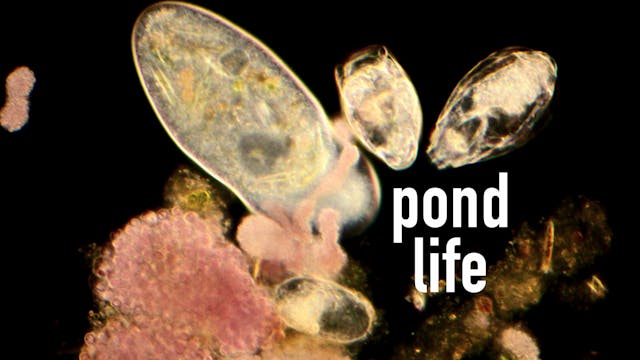Armadillidiidae
Living Beings
•
22m
When life feels overwhelming, this animal just curls up into a ball. Thanks to a segmented body structure, it can hide its vulnerable underside and head, drawing its antennae inside to form an uninterrupted sphere. Zoologists call the behavior conglobulation. Conglobulation can be triggered by strong vibrations or pressure and offers protection from predators such as shrews and spiders. It's also how roly-polies keep from becoming dehydrated.
All members of the family Armadillidiidae have overlapping body plates called tergites that are connected by flexible joints. The tergites allow the body to roll up inwards. To roll up, they have muscles called pleopods that contract the abdominal tergites inwards. That's some serious core strength!
Other animals who can conglobulate include armadillos and cuckoo wasps. Pill millipedes, which look similar but are unrelated, do not conglobulate.
Armadillidiidae are actually a type of crustacean. They have gill-like structures, and typically 14 legs. Imagine if shrimp lived above water and walked on land, or a pod of lobsters, or a parade of prawns meandered across the forest understory.
Like a DJ, this animal goes by multiple names: Roly-Poly, Slater, Butchy Boy, Butcher Boy, Carpenter, Chiggy Pig, Parsons Pig, Potato Bug, Cellar Bug, Doodle Bug, and the list goes on. Again, they are *not* bugs, but rather landlubbing crustaceans. They are small, and sometimes they are considered (agricultural) pests when their numbers explode, but they are usually harmless to humans. Actually they make popular pets!
Armadillidiidae primarily feed on decaying plant matter, such as leaves, and to a lesser extent, wood fibers. So, they do the world a service as recyclers. They may also consume living plants, particularly in moist conditions, where they may nibble on leaves, stems, shoots, roots, tubers, and fruits. Some species even supplement their diet with decaying animal flesh or feces, along with shed snakeskin and dead insects when necessary. This dietary diversity plays a role in slowing down the decomposition of litter, thereby aiding in the retention of organic material in the soil. Consequently, Armadillidiidae contribute to ecosystem balance as detritivores, helping maintain the carbon content in the soil. And they look cool doing it.
When things get overwhelming, it's ok to curl up in a ball too, for a time.
Up Next in Living Beings
-
Pond Life
Under the surface of a freshwater pond, microscopic organisms graze on shimmering reefs of photosynthesizing algae and bacteria. Explore a jewel-like aquatic realm, home to single-celled ciliates like Euplotes, Coleps, and Paramecia, as well as miniscule animals called Rotifers. Created in collab...
-
Rotifer | Narrated
Meet a tiny 1000-celled animal living among single-cell organisms. Rotifers are weird and wonderful, like aliens on earth! Rotifers are among Earth's smallest animals, tied with Tardigrades. Despite their tiny size, these multicellular creatures display a surprising complexity that is both fascin...



